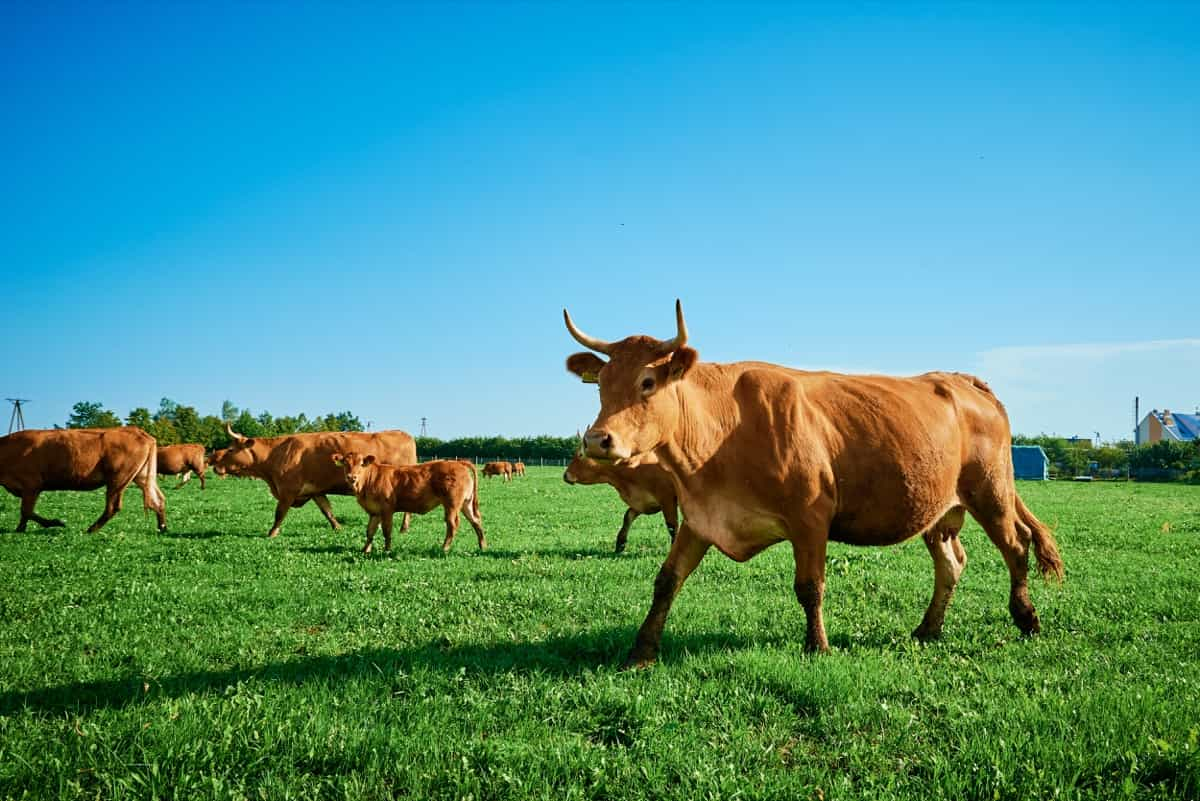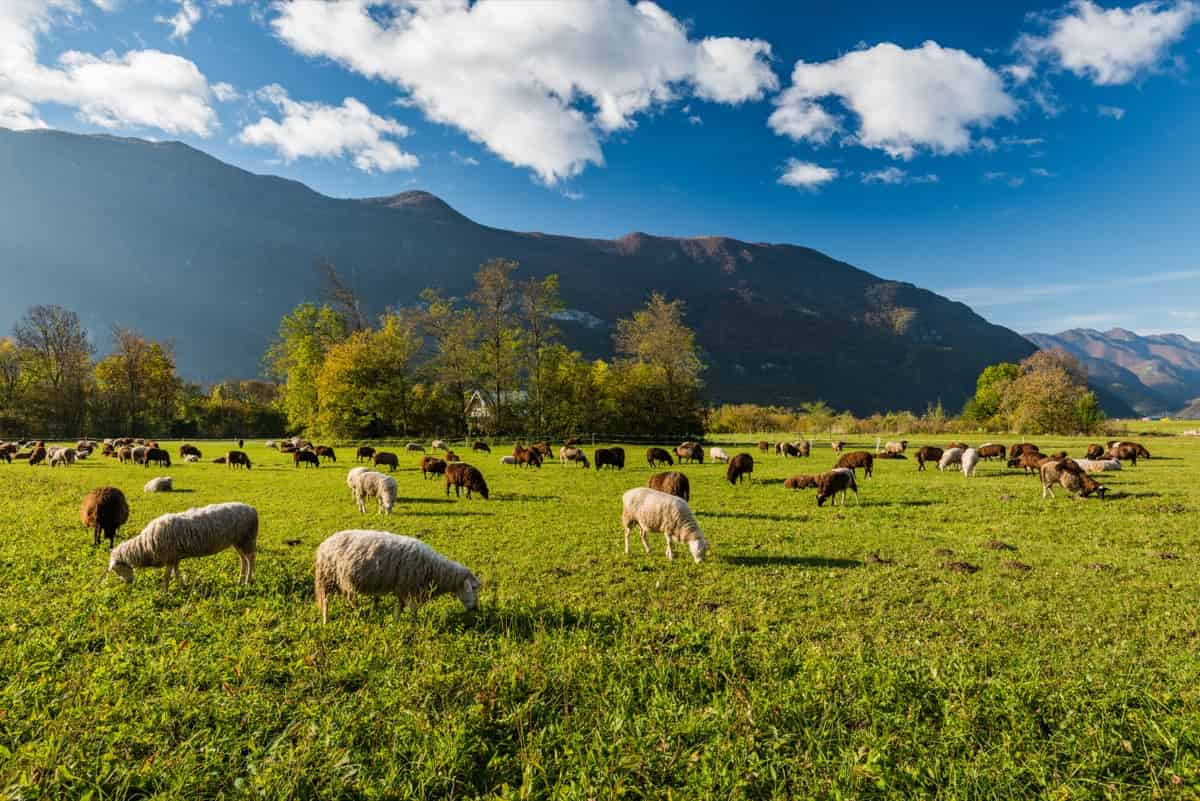There is a common misconception that when the word ‘pasture’ is used, you are going to picture a big field of green grass, but it is so much more than that. This is a mixture of grasses, legumes, and other plants that have been planted and kept alive by someone. This type of land can be fenced in and used by homesteaders, farmers, ranchers, and other livestock owners to provide their animals with the nutrients they require to thrive.

How to Grow Pasture for Livestock
Create a Pasture Plan
The first step to creating your Pasture is to put it on paper. Make sure you research your area, climate, and livestock’s needs, and take a look at your layout. You can also use an aerial view such as Google Maps to see potential pasture areas. A new pasture’s challenges and management requirements must be addressed in a step-by-step plan.
In your local extension office, you can find helpful people who can advise you about your climate and pasture health. They may be a valuable resource, so consider contacting your county extension office before making your pasture plan.
Conduct Soil Test And Amend It, If Required
When you are trying to grow anything, soil testing is essential. A soil test will help you identify which plants will thrive in your soil conditions or explain how to amend the soil to create the ideal pasture environment. Plant roots cannot absorb nutrients in acidic soil, so fertilizer may not benefit the plants if you apply it. Acidity in the soil can be neutralized by lime for months to years. Limestone ground finely will react more quickly than limestone ground coarsely. Apply lime for a year before seeding if your pH is low and you need a lot of lime.
Decide What to Plant When You Create Your Pasture
Once you have your soil test results, you can determine what plants will grow in your soil, but there are other things to consider before you buy your seeds. A well-planted pasture is essential for all domestic grazing livestock. A well-planted pasture has both grasses and legumes.
- Grasses: You can add grass (or roughage) to your pasture to add fiber, which grazing animals need to survive. Two types of grass can be planted in a pasture: sod-forming grass and bunch grass.
- Legumes: When planted and consumed alone, legumes can cause ruminant animals to bloat if planted with grasses in your pasture. Protein from these plants improves the quality of pastures. The list includes cowpea, horsegram, lucerne, barseem, green gram, black gram, Shanka pushpam, and phillipasara.
Land Preparation
The result of land preparation must be a fine, firm, weed-free seedbed, no matter what tools are used. Planting areas must be cleared of grass and weeds. Once the soil has been thoroughly cultivated, it must be plowed, hoed, forked, or spaded. A soil sample should be taken and sent for analysis at this stage. The report will provide valuable information on the use of fertilizers and lime.
The area can now be broadcast with fertilizers and lime that need to be applied. Afterward, the land is cultivated again to incorporate the fertilizer and lime and kill any weed seedlings that have emerged. Pasture species may be planted with seed or vegetative material, depending on the species.
Seeding Pasture Seeds
Broadcasting seeds and using a planter or drill are two methods of seeding. Seed-to-soil contact is crucial to successful seeding; seeds should not be buried more than 1/8-1/4 inch deep. Broadcasting seeds are less effective unless you drag or harrow the seedbed afterward to pull some soil over it, then roll it again to pack it down. A no-till drill is an excellent alternative way if you do not intend to till your pasture.
In case you missed it: Feeding Livestock with Microgreens: For Cattle, Goats, Sheep, Rabbits, and Pigs

The seed is dropped into a small slit in the soil, and a press wheel closes the slit in one motion. The seed rate depends on the species being planted, the method and time of planting, climate conditions, the type and number of grazing animals, and the intent of reseeding. You can find grass and legume seeding recommendations in the “Recommended Pasture and Hay Species and Seeding Rates” factsheet.
Start Clean & Firm Weed Control
If you grow plants from seed or vegetative materials, you should avoid competing with weeds as much as possible. The best way to start is to be as clean as possible. You should spray glyphosate in early fall or spring before preparing the land for planting if you plan to plant in a field with some other grass or grass weed. The only way to eliminate weed problems is to disk once or twice before planting.
To truly reduce the weed population, it may take a few rounds of disking, resting, weed sprouting, and disking again. The point is to reduce competition before planting your desired forage crop, whether you use herbicides in combination with cultivation or several rounds of cultivation followed by the fallow time.
Fertilize Your Pasture
Once a seed emerges and develops a root system, the forage needs immediate access to nutrients, especially nitrogen (N). For each type of crop, there is a target pH that is best suited for nutrient uptake. Before spreading fertilizer, wait until you have actively growing plants with a functioning root system that have emerged a few inches tall, and have a functioning root system.
P, K, and lime can be applied at any time, but nitrogen fertilizer should be applied when pastures and hayfields respond best. It usually takes 60 days for most nitrogen applied as part of commercial fertilizer to disappear. Additionally, a grass crop cannot use a large amount of N at once when a high rate is applied in one application. By the middle and end of the growing season, grass pastures and hay fields are deficient.
Weed Control
Many weeds emerge in the spring. Identifying and killing them in time is, therefore, essential. Some weeds are more effectively sprayed than others. In this case, it is important to take special care when choosing herbicides for pasture weed control. Restrictions on grazing and reseeding may be part of such chemicals.
Pay Attention To The Seasons
Seasons have influenced farmers since the first cattle farmers set up their fields. Plant in late winter, unless you are planting alfalfa, to ensure seeds are covered during freeze and thaw cycles. Maintain cattle feed and vegetation cover during the growing season using a rest and rotation grazing system or a rotation grazing system. Ideally, you should plant your legumes at 3-4 inches first, then give them a few weeks to establish. For healthy growth, keep rotating them after they have been established.
In case you missed it: Top 10 Tips to Maintain Feed Conversion Ratio (FCR) in Livestock and Poultry

Conclusion
The process of improving a pasture is not quick or easy. There is a lot of planning, money, and patience involved. You can, however, create a productive pasture that provides your horses with plenty of food if you do it correctly. Throughout the year, keep up with basic pasture management practices.
- Feed Your Flock for Less: Top 10 Tips to Save on Chicken Feed
- Ultimate Guide to Ossabaw Island Hog: Breeding, Raising, Diet, and Care
- Hatching Answers: The Top 10 Reasons Your Chickens Aren’t Laying Eggs
- Eggs and Economics: Breaking Down the Cost of Raising Backyard Chickens
- Defend Your Greens: Proven Methods to Keep Iguanas Out of Your Garden
- Ultimate Guide to Cinnamon Queen Chicken: A Comprehensive Guide for Beginners
- Ultimate Guide to California Tan Chicken: Breeding, Raising, Diet, Egg-Production and Care
- Ultimate Guide to Marsh Daisy Chicken: Breeding, Raising, Diet, and Care
- 10 Types of Chicken Farming Businesses You Can Start for Profits